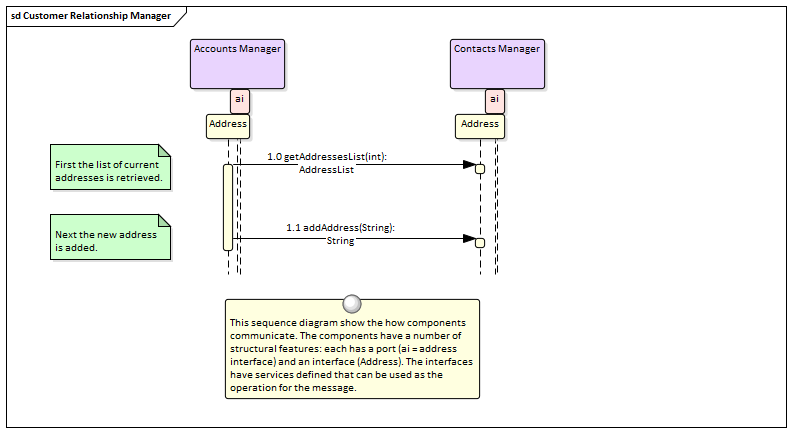| Prev | Next |
Sequence Diagrams
Enterprise Architect has a full and rigorous implementation of the Unified Modeling Language static and dynamic diagrams including the Sequence diagram. These diagrams are useful for a range of purposes where the Classifiers (or Instances) that participate in achieving an outcome interact together, sending and receiving messages. A common use is to show how a Use Case or Scenario will be implemented, or how a series of system components interact. The messages can have parameters defined that can be used to define the payloads that are contained in the message.

Sequence Diagram
Enterprise Architect provides support for creating and viewing Sequence diagrams. These can be modeled at a classifier or an instance level. Element or Object lifelines can be displayed and they can be created and destroyed. Synchronous and Asynchronous messages are supported that can be related to classifier operations, including the sending of parameters and return values. Fragments are supported and can be used to create highly expressive diagrams. Ports and Interfaces can be represented on the diagrams, allowing complex solution architectures and designs to be modeled. There is also a facility to automatically create Sequence diagrams from a running system's stack trace, which allows powerful analysis to be performed and comprehensive and accurate documentation to be generated.
Learn More: Sequence Diagram

